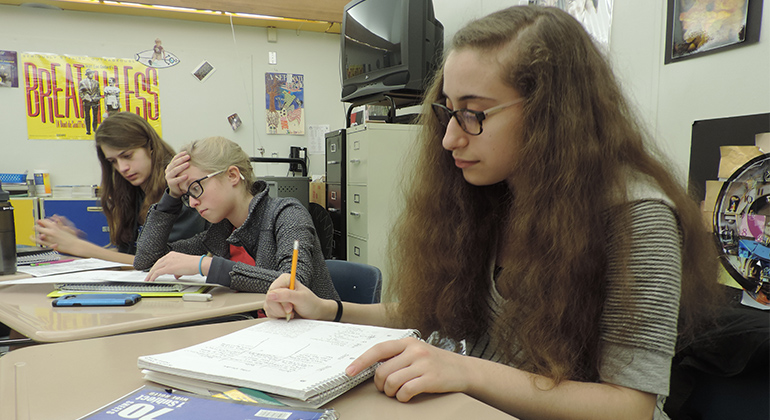Thinking Ahead: Parkway North Students and Staff Talk About Taking AP Courses

As course registration came to to close last week, it meant another round of students signing up to take one or more AP courses. Advanced Placement (AP) is a program in the United States and Canada created by the College Board which offers college-level curricula and examinations to high school students. American colleges and universities may grant placement and course credit to students who obtain high scores on the examinations.
College and Careers counselor Christy Wills said, “AP [and honors] courses greatly benefit students, especially when they’re looking to attend a 4-year institution after high school. Not only does it prepare them for the amount of work, but it also prepares them for the high-level thinking involved in college and beyond.”
AP classes were created in the mid-1950s as a response to the widening gap between secondary school (high school) and college. A pilot program in 1952 had 11 subjects, but AP didn’t officially launch until the 1956 school year, when College Board took over the program and named it the College Board Advanced Placement Program.
“I decided to be an AP student because I wanted to prepare for college. I think the classes are also more interesting and challenging,” said senior Claire Maher, who takes five AP courses.
The program expanded rapidly over the years. Now over 2.2 million students take AP exams every year in 38 subjects. It’s also much more common for students to take multiple AP classes over the course of their high school careers, according to the Washington Post. While these classes have become popular, they can take a lot of time due to the heavy workload.
AP classes are generally seen as intense, yet that doesn’t imply that a student should be overwhelmed.
“AP classes are considered college level classes, so for a high school student who is trying to balance extracurriculars, the actual course load could be really difficult to keep up with the work…During tennis season, the long practices and games sometime interfere with how much time I have in the evening,” Maher said.
AP classes are specifically designed to help students prepare for the AP exams. According to the College Board, over 2,600 colleges grant credit for AP scores. At most schools, to be granted credit a student would need to obtain a 3 or above on the AP Exam.
Wills said, “The goal of AP is layered. On the surface, if a student takes the course, scores well on the exam, and their intended college(s) accept that credit, the student can pay $94 for a test that winds up getting them thousands of dollars worth of credit at their institution. [Second], taking AP courses could allow flexibility in your future college schedule. [Finally], according to College Board, students who take AP exams get higher grades in college than those with similar grades who don’t take AP exams.”
Some colleges will allow a student to submit a limited number of credits based on AP tests. Therefore, students should consider which courses they want to take and what their desired college will accept.
“Choose a subject that you’re passionate about. If you do that and ask good questions, seek help when you need it, you’re going to be just fine,” said Wills.
by Ijeoma Nkenchor, multiple media guru
